Chin Augmentation in Turkey
Search and Compare the Best Clinics and Doctors at the Lowest Prices for Chin Augmentation in Turkey

Find the best clinics for Chin Augmentation in Turkey
With Medijump you can browse 21 facilities offering Chin Augmentation procedures in Turkey. The cheapest price available is $250 in Istanbul. And for the cheapest price globally, prices start from $70 in Singapore.
Chin Augmentation in Istanbul
Price: $ 250
Chin Augmentation in Izmir
Price: $ 3,122
Singapore offers the best prices Worldwide
Price: $ 70
Ugurlu Plastic Surgery Clinic, located in Levent Mahallesi, Istanbul, Turkey offers patients Chin Augmentation procedures among its total of 33 available procedures, across 4 different specialties. Currently, there's no pricing information for Chin Augmentation procedures at Ugurlu Plastic Surgery Clinic, as all prices are available on request only, whilst the national average price is approximately $2,372. All procedures and treatments are undertaken by the lead specialist at the Clinic, and they are not accredited by any recognized accreditations institutes
- Home
- Turkey
Compare Before & After Photos of _procedure_photos.phpChin Augmentation


Front view
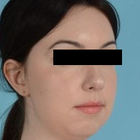
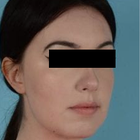
Half-side view
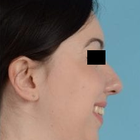
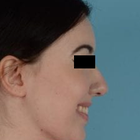
Full-side view
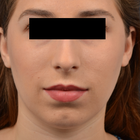

Front view
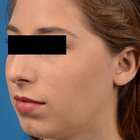

Half-side view
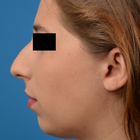
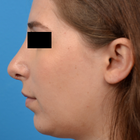
Full-side view
WHY US?
At Medijump, we're making medical easy. You can search, compare, discuss, and book your medical all in one place. We open the door to the best medical providers worldwide, saving you time and energy along the way, and it's all for FREE, no hidden fees, and no price markups guaranteed. So what are you waiting for?

Free

Best Price

Widest Selection

Risk-Free
What you need to know about Chin Augmentation in Turkey
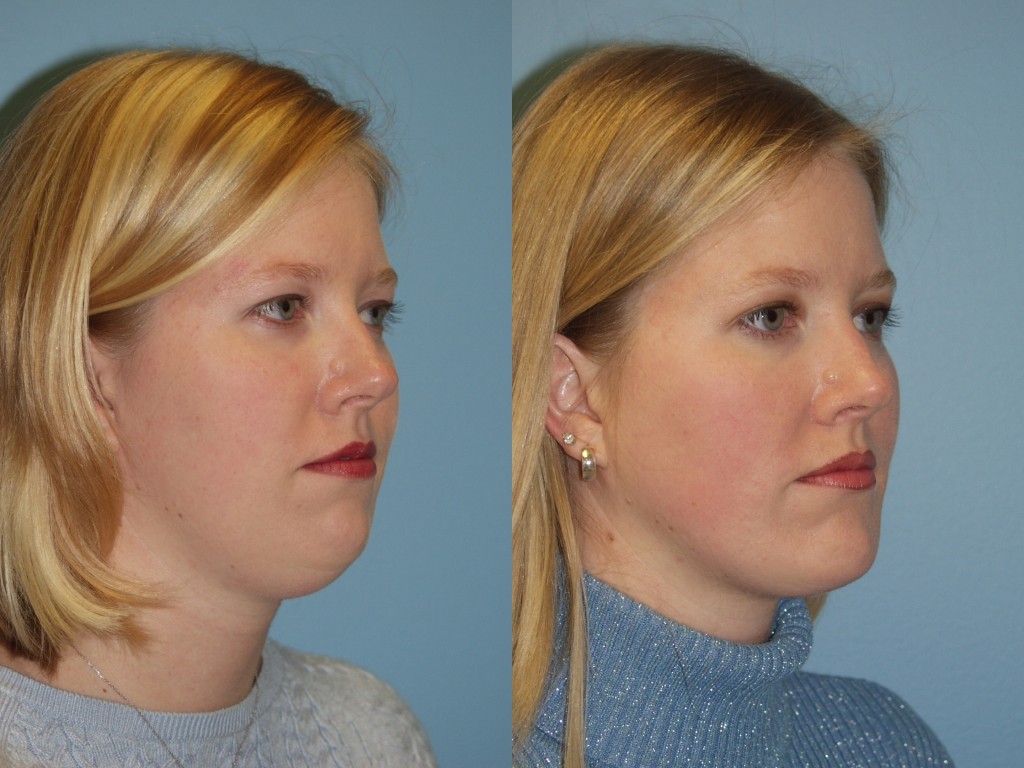
Chin augmentation is a type of genioplasty or mentoplasty (chin surgery). It is a cosmetic surgery done to balance your lower face by altering the soft tissue, skeletal, and dental parts of your face. This type of cosmetic surgery is perfect for both men and women who think that their chins are not shaped proportionally to the rest of their face. The procedure is normally performed at the same time as rhinoplasty or facial liposuction.
There are two key features to a balanced facial profile, your nose and your chin. The chin is an essential feature of your appearance and if it is understated, it will make your facial profile uneven. Typically, a strong and broad chin is considered attractive to men. While a more delicate and narrow chin is appealing to women. However, whether you are a man or a woman, if you are not happy with how your chin looks you may choose to have cosmetic surgery to aid your appearance.
A chin augmentation procedure is usually done to contour your chin and make it:
- More prominent
- Broader in size
- Rounder or more angular
- Project more
- Reduce the appearance of double chin caused by a small chin bone
What is the cost of Chin Augmentation in Turkey?
Variances in the price of a Chin Augmentation in Turkey may emerge due to multiple influences. Elements that can influence the cost include practitioner expertise, geographical positioning of the service, anaesthetic costs, medical center charges, and the price of post-operative wear and medication. Some medical facilities even offer bundled services encompassing the procedure, recuperation, and follow-up care expenses. Ensuring all prospective costs are eluded during consultation can help avoid surprise bills. Explore healthcare insurance options and payment plans designated for patients that could potentially lessen the financial burden of the procedure.
By opting for a Chin Augmentation in Turkey, patients are making a valuable investment in their self-worth and physical appearance. While the financial dimension is a crucial consideration, it shouldn't be the sole deciding factor. Giving precedence to the qualifications of the doctor, the standard of care, and safety measures can help ensure long-lasting and gratifying results. Call a local clinic to get more details on costs.
What does a Chin Augmentation Procedure Involve?
Chin Augmentation can be performed via two types of procedure:
- Chin implants - for chin enlargements, to reshape or push forward your chin’s appearance.
- Sliding genioplasty or Osseous genioplasty (Chin reduction) - this type of approach is for those who aim to have a less prominent jaw appearance.
Good candidates for this type of surgical cosmetic procedure should:
- Be in good health
- Have reasonable and realistic expectations about the outcome of the surgery
- Should not suffer from cardiac problems or hypertension
If you undergo a chin reduction, during your cosmetic treatment procedure:
- You will most likely be under general anesthesia
- An incision will be done inside your mouth along with your lower gum. This will give your surgeon access to your chin bone.
- A bone saw or chisel will be used to make a second cut through your jaw bone. Your jaw bone will then be moved and wired or screwed in place.
- Sutures will be used to close the incision and bandage will also be applied. Since the cut was made inside your mouth, scars will not be visible.
- The procedure will approximately take one to three hours.
As for chin implants, during your cosmetic treatment procedure:
- You may opt for general anesthesia or you may also choose to go under local anesthesia with sedation.
- An incision can be made inside your mouth or outside, under your chin. A pocket will be created under your chin bone and under your muscles. The implant will then be placed inside.
- Your surgeon may use your bone, fat tissue or an implant made out of silicone.
- Your implant will be attached to your bones with stitches or screws.
- Sutures will be used to close your surgical cut. If the cut was made inside your mouth, the scar will barely be seen.
How Long Should I Stay in Turkey for a Chin Augmentation Procedure?
After your Chin Augmentation in Turkey, your surgeon will recommend a duration of stay for close monitoring and follow-up visits. The duration of your stay typically depends on the specifics of your procedure, your overall health, and the speed of your recovery. If the procedure is uncomplicated, you may be able to leave the hospital on the same day. However, a stay of around 2 to 4 days may be recommended for post-surgery observation and initial recovery. Your surgeon will provide guidelines for activity restrictions, dietary modifications and incision care during this period.
Most patients plan to stay in Turkey for approximately 1 to 2 weeks after the procedure for regular check-ups and to ensure optimal healing. After returning home, you may be asked to restrict strenuous activity for a few weeks under the supervision of your local healthcare provider. Remember, your journey to wellness involves commitment to the full recovery process.
What's the Recovery Time for Chin Augmentation Procedures in Turkey?
Recovering from a Chin Augmentation is a several-week process, starting with initial discomfort and swelling, managed by painkillers, elevation, and cold compresses. By week two, major swelling subsides, revealing preliminary results. Adherence to a nutritious diet, avoiding strenuous activities, and following the doctor's post-op instructions are crucial for a smooth recovery. The full effect of the procedure should be visible within 1 to 3 months, noting individual recovery times may vary.
What sort of Aftercare is Required for Chin Augmentation Procedures in Turkey?
Post-operative care is a crucial component in ensuring the fruition of a Chin Augmentation in Turkey. Upon returning home, directives may include continued use of prescribed medications, application of healing ointments, and the upkeep of cleanliness and dryness at the surgical site. Regular consultations with your healthcare practitioner guarantees appropriate healing and the prompt identification of any impending complications. A detailed recovery blueprint may also encompass guidance on implementing positive lifestyle habits and stress mitigation strategies.
You might be necessitated to wear a chin strap for around a week to facilitate the tissues adjusting to their modified structure. In the ensuing weeks, it'd be important to limit physically demanding activities to prevent harm to the operated area. It's imperative to discuss any uncertainties related to post-operative care instructions and restrictions with your healthcare practitioner for ensuring an uneventful recovery.
What's the Success Rate of Chin Augmentation Procedures in Turkey?
Success rates for Chin Augmentation in Turkey are high with many satisfied patients, however, procedure nature, practitioner expertise, patient health, and post-op care adherence are critical for success. Research highlights boosts in self-esteem and life quality post procedure, though risk evaluations and outcome potentials demands a thorough healthcare provider consultation.
Ultimate success of Chin Augmentation doesn't rely only on surgical proficiency, but also on sufficient aftercare, realistic result expectations, regular check-ins, balanced diet, frequent exercise, and adequate skincare habits, all enhancing result longevity and overall well-being.
Are there Alternatives to Chin Augmentation Procedures in Turkey?
The most common reason for having a chin enhancement is usually to correct a recessive or weak chin. While a lot of people would actually prefer to have their facial features enhanced, not all are open to going under the knife to achieve a more appealing appearance.
Today, there are some non-surgical alternatives to cosmetic surgeries, as for chin augmentation procedure, one alternative is:
Chin fillers - small amounts of hyaluronic will be injected into your chin and cheeks to help define your jawline, giving you a strong chin. Chin fillers have a minimal recovery period and the procedure will not take long as compared to the surgery. However, the result is only temporary. It mostly only lasts between nine to twelve months, so if you want to maintain your well-defined chin, you have to go for a repeat session.
What Should You Expect Before and After the Procedure
Prior to the procedure, a detailed consultation with your healthcare provider is anticipated, involving an examination of your medical history and required tests to verify your appropriateness for the Chin Augmentation. The practitioner will elucidate the steps of the procedure, deliberate over your aesthetic objectives, and shape your expectations realistically. You'll be informed about the possible risks, complications, and the anesthesia that will be employed.
Post-procedure, anticipate some mild discomfort, swelling, and bruising, which will gradually diminish over a few days. Comprehensive post-op directives will be provided by your healthcare provider to expedite healing and limit potential complications. Ensuring adherence to the guidelines and regular communication with your healthcare practitioner can enhance your recovery process and results. A positive mindset, patience, and dedication to recovery significantly contributes to procedural success and overall well-being.
What are the Potential Risks of undergoing Chin Augmentation?
Patient reviews often highlight that their Chin augmentation has boosted their self-image and self-confidence. However, like any other surgeries, chin augmentation also poses some risks and complications. Although these instances are very rare, it is also important to be aware of them:
- Infections
- Nerve damage that may cause mouth or lip numbness
- Exposure to screws
- Extrusion of implants
- Allergic reaction to implants
Whilst the information presented here has been accurately sourced and verified by a medical professional for its accuracy, it is still advised to consult with your doctor before pursuing a medical treatment at one of the listed medical providers
No Time?
Tell us what you're looking for and we'll reachout to the top clinics all at once
Enquire Now

Popular Procedures in Turkey
Prices Start From $16

Prices Start From $1,945

Prices Start From $672

Prices Start From $432

Prices Start From $101

Prices Start From $5

Recommended Medical Centers in Turkey for Chin Augmentation

- Interpreter services
- Translation service
- Religious facilities
- Medical records transfer
- Medical travel insurance
- Health insurance coordination
- TV in the room
- Safe in the room
- Phone in the room
- Private rooms for patients available

- Interpreter services
- Translation service
- Religious facilities
- Medical records transfer
- Medical travel insurance
- Health insurance coordination
- TV in the room
- Safe in the room
- Phone in the room
- Private rooms for patients available

- Interpreter services
- Translation service
- Religious facilities
- Medical records transfer
- Medical travel insurance
- Health insurance coordination
- TV in the room
- Safe in the room
- Phone in the room
- Private rooms for patients available

- Interpreter services
- Translation service
- Religious facilities
- Medical records transfer
- Medical travel insurance
- Health insurance coordination
- TV in the room
- Safe in the room
- Phone in the room
- Private rooms for patients available

- Interpreter services
- Translation service
- Religious facilities
- Medical records transfer
- Medical travel insurance
- Health insurance coordination
- TV in the room
- Safe in the room
- Phone in the room
- Private rooms for patients available

- Interpreter services
- Translation service
- Religious facilities
- Medical records transfer
- Medical travel insurance
- Health insurance coordination
- TV in the room
- Safe in the room
- Phone in the room
- Private rooms for patients available

- Interpreter services
- Translation service
- Religious facilities
- Medical records transfer
- Medical travel insurance
- Health insurance coordination
- TV in the room
- Safe in the room
- Phone in the room
- Private rooms for patients available

- Interpreter services
- Translation service
- Religious facilities
- Medical records transfer
- Medical travel insurance
- Health insurance coordination
- TV in the room
- Safe in the room
- Phone in the room
- Private rooms for patients available

- Interpreter services
- Translation service
- Religious facilities
- Medical records transfer
- Medical travel insurance
- Health insurance coordination
- TV in the room
- Safe in the room
- Phone in the room
- Private rooms for patients available

- Interpreter services
- Translation service
- Religious facilities
- Medical records transfer
- Medical travel insurance
- Health insurance coordination
- TV in the room
- Safe in the room
- Phone in the room
- Private rooms for patients available
Chin Augmentation in and around Turkey
About Turkey
Where East meets West – Turkey is considered to be both Asia and Europe, with 95% of its landmass being located in Asia. Rich in culture and history, a land once inhabited by some of history’s greatest empires, including most recently the Ottoman Empire and long before that, the Roman and Byzantine Empires. Of Turkey’s 1,200+ medical facilities, of which many are JCI-accredited and this includes an even mix of publicly and privately owned hospitals and clinics.
700,000 annual medical tourists are drawn to Turkey each year, traveling from all across the globe, particularly from within Europe and the Middle East, many of which travel for Chin Augmentation procedures. Dental, Cosmetic, Bariatric, and Reproductive procedures are most common, including Veneers, Hair Transplants, Gastric Bypass Surgeries, and IVF. Popular medical tourism destinations outside of the capital, Ankara, of course, include Istanbul and other regions like Antalya and Izmir.
Popular Parts of Turkey
With a population of around 85 million, Turkey has a landmass of nearly 800,000 square km. The capital city is Ankara, located inland, however, Istanbul is the most populous and most recognized city in Turkey with some 15 million inhabitants. Straddling both Europe and Asia, the city attracts 13 million tourists each year, making it the fifth most popular tourist destination in the world.
Additional well-frequented locations encompass Antalya nestled in the southern part of the country, as well as Izmir perched in the west. Paradoxically, the eastern region of the country sees less influx of tourists. One major contributing factor is the enduring Kurdish-Turkish conflict, exacerbated further owing to its geographical closeness to conflict-laden nations such as Syria and Iraq.
Sun-chasers seeking a blend of affordability and indulgence invariably find themselves drawn to the southern holiday resorts like Marmaris and Bodrum. These locales are a magnet for those yearning for 5-star luxury hotels, offered at reasonable prices and with all-inclusive perks, for their vacation getaway.
The discovery of the world’s oldest known megalithic site at Gobekli Tepe in the South-Eastern Anatolia Region has cast much doubt over mankind’s ancient history and consequently attracts a sizable number of ‘History Tourists’. This UNESCO World Heritage Site is believed to be over 11,000 years old, built during a time humans were understood to be simple hunter-gatherers.
Weather and Climate in Turkey
Enjoying a Mediterranean location, Turkey's south coast is graced by refreshing sea breezes. Despite this, the summer months from June through August witness soaring heat with temperatures often climbing into the 40s (104°F). The transitional seasons of spring and autumn bring more temperate weather, and winters are quite mild.
Turkey's vast expanse leads to a variety of weather patterns across its regions. The central parts of the country predominantly feature a semi-arid steppe climate, while the northern Black Sea region showcases far milder conditions compared to the southern Mediterranean Sea region.
Do take note of the potential problem of mosquitos and sandflies, particularly during summers in coastal areas. It's advisable to take proper protective measures against them. Though malaria cases are extremely rare, always consult a healthcare professional for appropriate advice before embarking on your trip.
Getting around in Turkey
Istanbul’s famous Ataturk International Airport sits 24 km outside the city and is home to the ever-popular Turkish Airlines. Most other major airlines service Ataturk, which is often used as a stopover destination for travelers between Europe and Asia. All the other major cities are serviced by their own international airports, with several low-cost domestic airlines joining them together, including AtlasGlobal, IZair, Onur Air, Pegasus Airlines, and SunExpress.
For those preferring to travel by land, Turkey has a few express train routes linking the major cities, most notably, Istanbul to Ankara. City buses are reliable and good value, whilst taxis are cheap, but be sure to negotiate the price before beginning any journey.
Tourist Visas in Turkey
Visa restrictions are relatively light, with a 90-day per visit allowance readily available for many nationalities. Still, e-visas need to be procured in advance, for a fee, by travelers hailing from countries such as the US, UK, Australia, China, and Spain. Conversely, passport holders from countries including France, Germany, Russia, and Singapore are granted visa-free entry.
For nationals from India and Pakistan, conditional e-visas are offered upon arrival, but solely at Ataturk International Airport. These visas have a validity of just 30 days. For comprehensive information on visa requirements, it is recommended to visit the Ministry of Foreign Affairs website.
Additional Information
- The Turkish Lira (TRY) is the local currency where $1 USD is worth about 18 TRY, having experienced heavy fluctuations recently.
- ATMs are in abundance across Turkey and accept all bank cards (Visa, Mastercard). Credit card and Amex payments are accepted in most restaurants and outlets, with more local food vendors or food market stalls, only accepting cash. Tipping is expected as service is not included at restaurants, this is usually between 5-10%. Taxi rides tend not to be tipped, just rounded up.
- Turkish is the local language with the eastern Kurds speaking Kurdish too. English is spoken by many locals working in tourist locations, including major cities.
- Islam (99.8%) is by far the main religion in Turkey, with a tiny Christian population (0.2%). Turkey is, however, a secular country where there is no ‘official’ state religion. Various elements of traditional culture remain, with much being modernized or ‘Westernized’.
- There are many public holidays, most notably Labor Day and Commemoration of Ataturk in May, Ramazan Feast in June, Kurban Bayrami in August, and Republic Day at the end of October.
Popular Searches
- Plastic Surgery in Thailand
- Dental Implants in Thailand
- Hair Transplant in Thailand
- Breast Augmentation Thailand
- Gastric Sleeve in Thailand
- Gender Reassignment Surgery in Thailand
- Laser Hair Removal in Bangkok
- Botox in Bangkok
- Dermatology in Bangkok
- Breast Augmentation in Bangkok
- Coolsculpting in Bangkok
- Veneers in Turkey
- Hair Transplant in Turkey
- Rhinoplasty in Turkey
- Stem Cell Therapy in Mexico
- Rhinoplasty in Mexico
- Liposuction in Mexico
- Coolsculpting in Tijuana
- Rhinoplasty in Korea
- Scar Removal in Korea
- Gastric Sleeve in Turkey
- Bone Marrow Transplant in India
- Invisalign in Malaysia
- Plastic Surgery in the Dominican Republic
- Tummy Tuck in the Dominican Republic
- Plastic and Cosmetic Surgery in Poland
- Rhinoplasty in Poland
- Hair Implant in Poland
- Dental Implants in Poland
- IVF in Turkey
